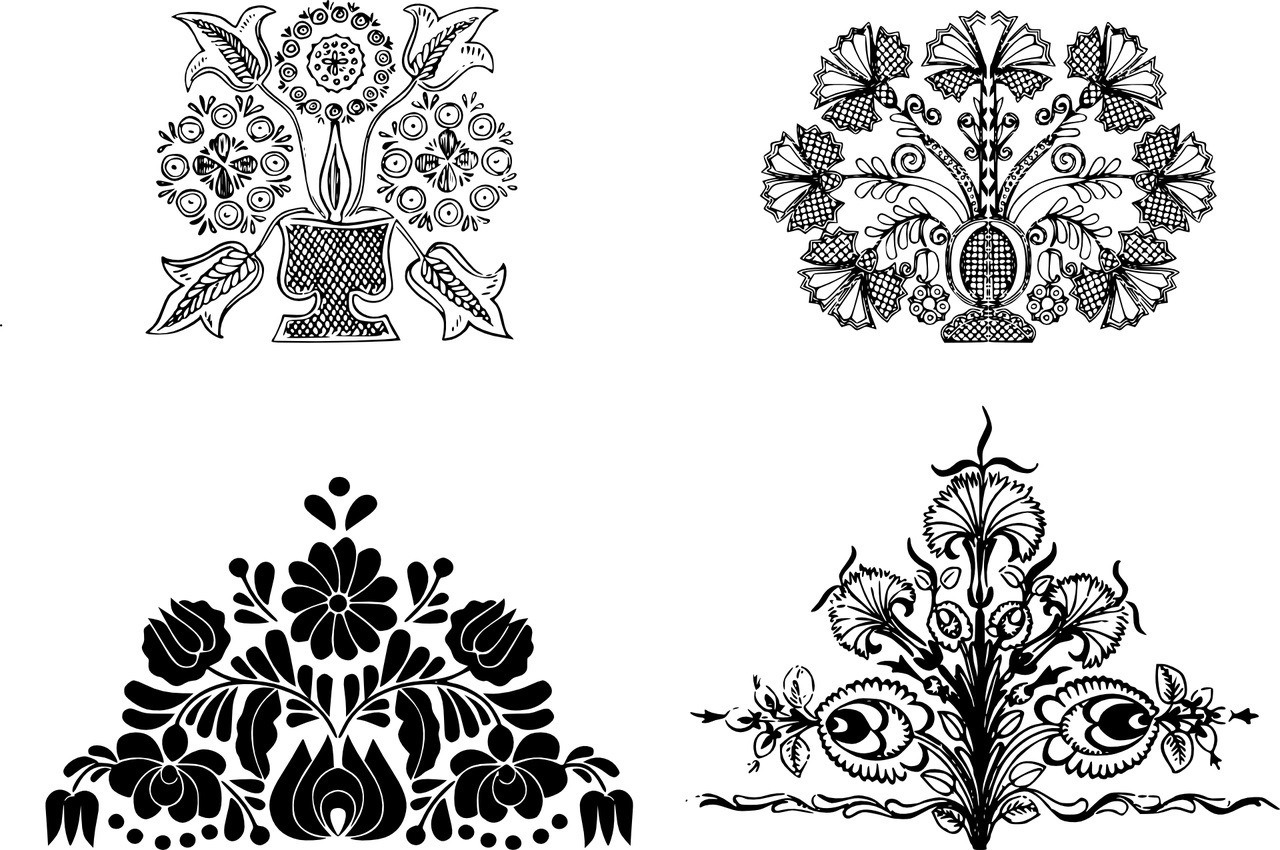An ancient element of Hungarian folklore: the tulip motif

Important symbols of fertility and ancient religion, tulip motifs have been central elements of Hungarian folklore and everyday life. They have their origins in an era well before the Hungarians arrived in the Carpathian Basin.
Tulips (tulipán) are one of the most ancient floral motifs in Hungarian folklore. It has been argued in several sources that they have – together with the flower itself – Asian roots and come from territories east of Europe. According to Gábor Lükő ethnographer,
“Archaeological findings are proof that Turkic tribes had been applying this motif on their bronze strap ends and in other ornamentation for nearly one and a half thousand years.”
Examples are a Scythian find in Ziwiyeh, southern Caucasus from the 7th century BC, considered the oldest known piece with the tulip motif, and a sword hilt found in Levedi (Levédia), the territory north of the Black Sea which was assumed homeland of the Hungarian tribes in the 9th century. The tulip motif was therefore already in use among Hungarians when they arrived in the Carpathian Basin.

Photo: Pixabay
Later, the motif appeared in strap ends used in medieval Hungary, usually depicted on the two sides of a curly vine. The motif is also frequently used on Szekler gates from Transylvania, and many other works of carving and embroidery. In fact, as Magyarországom writes, the popular floral motifs used in Hungarian embroidery could actually originate from Kyrgyz and Yakut works such as saddle clothes.
According to Morzsafarm, the tulip motif was also used by several kings in Hungarian history: it appeared on the coat of arms of Béla III, the coins of Charles I, and the royal kitchenware of King Matthias, among others.
A symbol of divinity and femininity
According to Géza Varga paleographer, the tulip motif has an important role in the world of religion. It is often used to symbolise the “sky-high tree”, which corresponds to what we call Milky Way today. The middle petal, for example, is used to depict the fissure of the Galaxy in which the sun rises at Christmas time. Together with its role as a feminine symbol, it symbolises the birth of a sun god in the vulva of the matriarch, which is another popular interpretation of the tulip motif.

Photo: Pixabay
The above interpretation is based on the fact that tulip motifs often contain certain elements of the Sekler runic script; one just has to read the script symbols that resemble parts of the tulip, such as the middle petal.
Flowers have long been linked to femininity. Floral motifs are important symbols of fertility, and have presumably developed from Mesopotamian depictions of female figures. Tulips, together with lily, another flower from the same family, are often used to depict a vulva. When they appear on a bride’s basket, for example, they symbolise the loss of virginity. Their most important role is perhaps that “they can symbolise a woman in every stage of her life from childhood to illness, old age, and death”.
Source: magyarorszagom.hu, morzsafarm.hu, sokszinuvidek.24.hu


